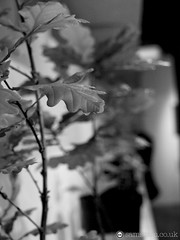Unless you follow me on Twitter you either don’t know or don’t care that my home town is the rather unfortunate city of Southampton. When I was younger I had a complete and utter lack of affection for this place, and left, working my way as far away from the town of my birth by attending increasingly northern academic institutions.
I seldom go home, despite nostalgia somewhat returning in my old age. However, it does indicate something if I still refer to my parent’s house as home.
Owen’s recent column in BD on the flawed infrastructure planning of this retail dominated port town actually evoked a strange sense of longing for this city in all it’s prim and grimy facets. So, yesterday – after a surprisingly obstacle free train journey down from Manchester – I went for a cycle around to see my old haunts.
Undoubtedly where you’re from shapes you, and I realise now that I perhaps did not give Southampton due credit for shaping some of my artistic sensibilities. The
Southampton City Art Gallery, as well as being a beautiful building, houses a large collection of Graham Sutherland paintings. Sutherland will always be a touchstone for me when it comes to thinking/feeling about art. Perhaps this civic art gallery has shaped what I think/feel about art institutions.
Anyway, I digress.
My mama cajoled me into attending
Desiring Necessities at the John Hansard Gallery. This small gallery is located in the heart of the excessively landscaped Highfield Campus of the Southampton University.
I was wary at first, since
Desiring Necessities looked like it was going to be one of those overly curated beasts which clumsily miss-handles popular culture in the gauchest of manners…
… and wonderfully, I was pleasantly surprised.
The art writer Michael Bracewell - who writes in the free catalogue (
downloadable from here ) - hit the nail on the head why this exhibition appeals so deeply. In his opening words he summed it up as being, “
Personally important but perhaps not academically respectable.”
Dealing with veins of iconography running through popular culture, the curator Ilaria Gianni manages to tread a very fine path. This exhibition almost completely avoids the pitfalls that often cripple exhibitions dealing with similar themes. Delicately constructed, the works lie together nicely, neither jarring each other or drawing their interconnectedness with too broad strokes.
 A still from Susanne Burner’s video 50,000,000 CAN’T BE WRONG
A still from Susanne Burner’s video 50,000,000 CAN’T BE WRONGThoughtfully approaching usually gnarly subjects; nostalgia is examined without straying into schmaltz, cultural anxieties without hysteria and deals with popular culture in an intelligent and delicate manner which still manages to be powerful and oddly respectful.
Bracewell – who has rocketed in my estimation, despite rather clumsily name dropping Morrisey – touches on other aspect which makes this exhibition so evocative and compelling, that these artists manage to deal with popular culture without trying to trump it. It’s a fact - Bracewell quoting someone and I miss-quoting him - that artisans working in popular culture are often more sophisticated than the artistic types that mimic them. This is something which was never better illustrated than the often clumsy
State of the Art : New York at Urbis.
Why do I like this exhibition so much? Evocative of the hidden rivers of meaning/language/text that runs through culture, it approaches subjects without having to tie them down too forcefully. There is something experiential and not dictatorial about it that I really appreciate.
The definite highlight of the exhibition is Susanne Burner’s video
50,000,000 CAN’T BE WRONG, depicting scenes of modern hysteria, audiences and crowds to a sound track of ghostly music. This hypnotic video could perhaps completely reverse my oft-stated attitude to video art. It sets the tone of the entire exhibition, melancholic and suggestive of something more, without having to state or explain itself.
Hopefully when I return to Manchester I can find the time and energy to write some more about what’s happening, but for the time being my excursion down south has been well worth it.





